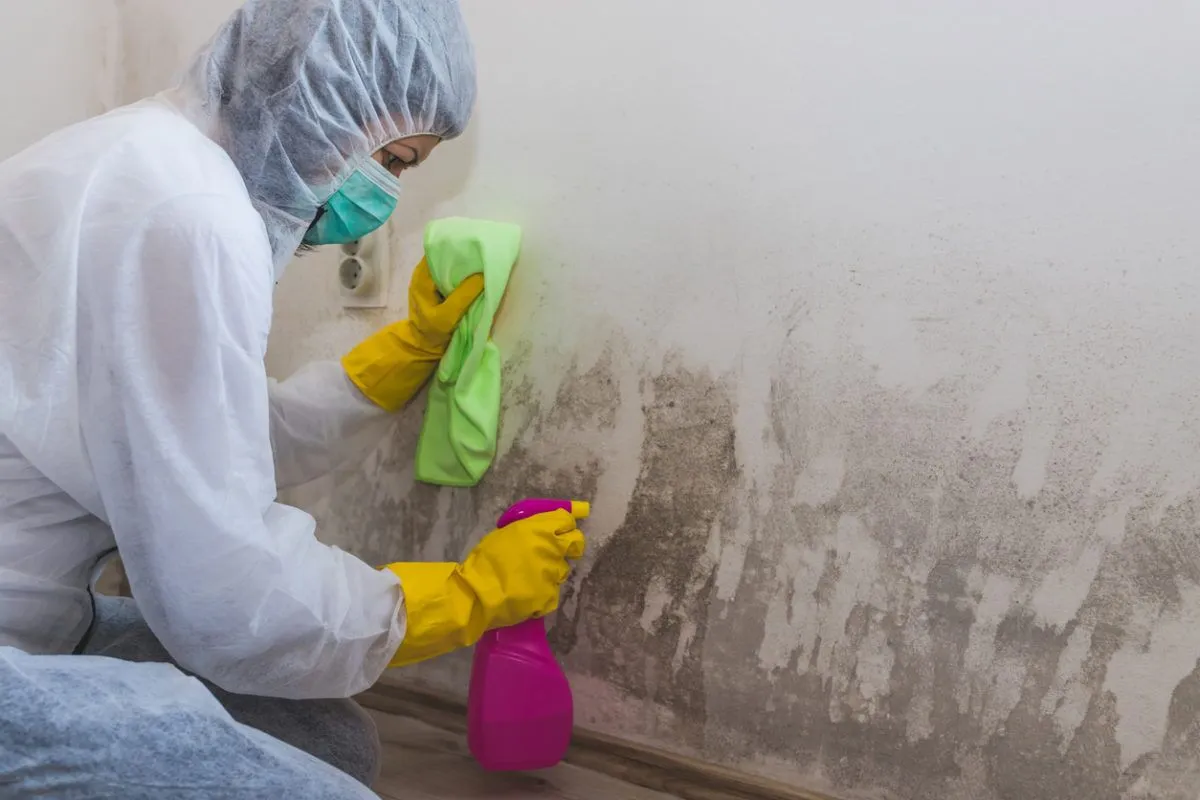Mold in your home is almost always bad news. Mold is a fungus designed to digest dead trees into forest soil, but it can’t tell the difference between a house and a tree. It likes to grow in any material that is saturated with moisture, and it only has to be soaked once for the mold to start a colony. From there, it will try to live off the moisture in the air and any nutrients it can eat from the new home. Mold likes to grow in drywall after a leak, furniture after a flood, and can take hold in the carpet with just a spill that dries slowly. It can eat away at structural beams and cause roofs to sag.
If your home has ever flooded, leaked, or sustained a high humidity, mold may be growing somewhere – like a dark, undisturbed place that is rarely seen. If you find signs of mold or have recently experienced a leak or flood, mold remediation is the best way to eradicate mold from your house to keep your family and home materials safe.
WHAT IS MOLD REMEDIATION?
Mold remediation is the process of preventing or recovering from a mold infestation. If your home has just flooded. Mold remediation teams specialize in drying operations that can prevent mold from taking hold. If you have found signs of mold in your house, a mold remediation team can help you hunt down the mold, remove it, and repair any damage it has caused.
SIGNS OF MOLD IN YOUR HOME
- Allergy symptoms at home or overnight
- Musty or sour smells in the house
- Speckled or fuzzy discoloration on any surface or furniture
- Drywall or timbers that are spongy to the touch
- Circular or splotchy discoloration
- Any recent leaks or flooding
THE MOLD REMEDIATION PROCESS
The mold remediation process involves identifying, removing, and recovering from a mold infestation. Mold prevention involves rapid drying and anti-mold treatments after a flood or leak.
TEST AND IDENTIFY MOLD LOCATIONS
- Visual inspection of most likely mold locations
- Test surfaces for mold
- Test air for mold spore concentration
REMOVE MOLD
- Treat with powerful anti-fungal agents
- Bag and remove mold-ruined materials
- Clean and sanitize the area
RECOVER FROM MOLD DAMAGE
- Remove mold stains from surviving materials
- Restore moldy furniture and personal items
- Rebuild and remodel if the home structure was damaged
HOW MUCH DOES MOLD REMEDIATION COST?
The cost of mold remediation varies quite widely depending on the extent of your mold. Minor mold treatment can cost between $200 – $500, while large-scale mold remediation involving infested drywall and carpet removal can run above $6,000. If you count the home renovations that are sometimes necessary after mold-softened walls and beams are removed, the number can potentially go much higher.
The national average for a mold remediation job, however, is about $2,300.
MOLD INSPECTION – DISCOVERING MOLD VS LOOKING FOR MOLD
Every kind of inspector has a relationship with mold. Even electricians and plumbers find themselves faced with mold-backed drywall regularly. If you are buying a home or maintaining your home, mold may be found during a home inspection. However, if you are worried about signs of mold, you may hire a mold inspector to specifically track it down.
WHAT DOES A MOLD INSPECTOR DO?
A mold inspector looks for mold instead of just watching out for it. They can take both air and material samples to determine exactly where and how much mold is lurking in your house. A mold inspector can also give advice on how to approach mold remediation for the mold that they find.
WHAT HAPPENS IF MOLD IS FOUND IN A HOME INSPECTION?
If mold is identified during a home inspection, the first step is to determine how bad it is. A few small patches in hidden places can be killed and cleaned away more easily than pests because it is just a plant. However, extensive mold should cause you to think twice about living in such a property (or asking anyone else to) until full mold remediation can be completed.
WHAT TO DO AFTER THE MOLD REMEDIATION PROCESS
Once the mold remediation is complete, make an effort to prevent mold in the future. If you need to install new drywall, use green board, which is mold resistant, and seek mold-proof insulation. Then have your roof, plumbing, and basement inspected, as these are the top three sources of moisture that can result in mold.
Some mold remediation services also offer home restoration to fully rebuild your home after removing the mold. If so, you will not need to arrange remodeling services and can transition directly back to enjoying a safe, mold-free home.
MOLD REMEDIATION WITH LIGHTNING RESTORATION
If you have recently experienced a flood, or leak, or suspect signs of mold in your house, call Lightning Restoration. Our skilled Tampa mold remediation teams will find any mold that lurks and have it removed before your family takes further health damage or your walls lose any further structural integrity. We will also work with you to rebuild any part of your home that was damaged so that it is identical or even better than before the mold was found.
To book a mold inspection or consultation, contact us today.

